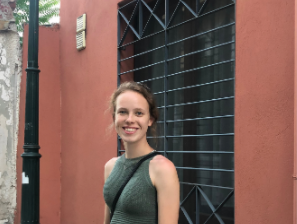Power of Diversity lecture discusses racial equity
February 15, 2019
Last Tuesday, Feb. 5, the Office of Inclusion, Diversity and Equal Opportunity (OIDEO) welcomed Estela Mara Bensimon, Ph.D. to campus as part of their Power of Diversity series. The yearly series, first started in 2010, includes two nationally and internationally acclaimed speakers, and four CWRU faculty speakers.
Marilyn Sanders Mobley, Ph.D., vice president of the OIDEO, says that when she started the series she believed the “greater visibility of and exposure to the diverse spectrum of topics and perspectives would enable students, faculty, and staff to be more mindful of the value of diversity.”
Bensimon is a professor of higher education at the University of Southern California’s Rossier School of Education and the founder and director of the Center for Urban Education. Her work has primarily focused on increasing racial equity in educational outcomes for students of color. In efforts to help administrators and faculty take action, Bensimon developed the Equity Scorecard, a process and data tool that strives for institutional change to shift “campuses toward cultures of inclusion and broad ownership over racial equity.” Mobley hoped Bensimon could direct CWRU and administrators from other universities on how an “equity lens” can be used as another layer of accountability when promoting diversity, inclusivity and equity.
Near the start of her lecture, “Reclaiming Racial Justice in Equity,” Bensimon showed an image of Dutch artist Jens Galschiot’s “Survival of the Fattest.” The sculpture depicts a frail, starved man trying to stand with a large, morbidly obese man on his shoulders. The piece’s inscription reads, “I’m sitting on the back of a man. He is sinking under the burden. I would do anything to help him. Except stepping down from his back.”
The sculpture is a commentary on the relationship between the Western and non-Western countries and whites and minorities. Bensimon then altered the inscription to apply to educational institutions, “I want more racially minoritized staff to be hired. I will do whatever it takes. But I am not willing to accept that our hiring process reproduces whiteness.”
“The systems we revere and reproduce are the same as the sculpture,” Bensimon said, calling for universities to analyze the reality of racial equity among their institutions. She stated that faculty need to ask the difficult questions: who is in the room, who drops out of the course, who comes to office hours, who do I choose to work with in my lab. Administration need to examine their hiring structure, the job application and the questions they ask prospective faculty members. Emphasizing the need for a new system, Bensimon said, “there is an almost universal quest for structural solutions that leave whiteness untouched.”
Bensimon continued to discuss the fallacy that problems in class are caused by ill-prepared students. Instead, she suggested professors acknowledge when there is a correlation between certain students understanding the concepts well, while others are consistently not grasping the information. She encouraged faculty members to study the language of their syllabus and gradebook for patterns of student success. If CWRU hopes to be a more equal institute, Bensimon proposed change starts first among the faculty. “We as faculty are who spend the most time with students,” she said. “It is in the classroom where passing and failure are mediated.”
While Bensimon stressed the importance of top-down change, alterations to the hiring process and a close analysis of tools used by faculty in the classroom, she also suggested simple ways to engage students in learning. Speaking to a group of students sitting in the front of the room, Bensimon asked them what class brought them to the lecture and how their desks were organized in that class. Their response was a gender studies class, and they sat in a circle or horseshoe shape in order to foster discussion and respect for other students. Bensimon was not surprised that such a class had a positive learning setup, but then she asked one student about her STEM classes, which are more common among CWRU students. The student responded that desks in the science, technology, engineering and math classes were not organized in the same shape.
Mobley reports that the OIDEO plans to “continue discussions with Provost Ben Vinson, the Diversity Leadership Council, Student Success, the Office of Multicultural Affairs, as well as with members of the Minority Affairs Committee of the Faculty Senate on ways to bring greater accountability to our work in diversity and inclusion, not only for better outcomes for our students, but also on more inclusive pedagogy and classroom climate.”
Bensimon reported that people used to say: “The problem of the 20th century is going to be color blindness.” Her response was, “P.S., we’re in the 21st century and this is still our problem.”
For Bensimon, being equity-minded means noticing racial inequalities; acknowledging when certain conventions do not work; understanding inequity as an institutional problem based in faulty structures, policies and practices; questioning assumptions, stereotypes and implicit biases and taking action to eliminate widespread inequity.
The wide gap between outcomes for students of different races is not an institution-specific issue. It happens everywhere, including CWRU, an institution where 49 percent of undergraduate students and 75 percent of faculty identify as white as of Fall 2017. Bensimon encouraged administrators, staff, faculty and students to recognize and investigate the problem, form coalitions and act.


